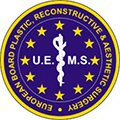
WHAT IS A BLEPHAROPLASTY?
The blepharoplasty, or surgery of the eyelids, is a procedure that allows us to remove fat and skin excess from the upper and / or lower eyelids, allowing us to correct eye bags and excess skin.
WHO IS A GOOD CANDIDATE FOR THIS SURGERY?
As we have already said, blepharoplasty is indicated to treat fat bags and excess skin on the upper and lower eyelids that make you look tired or older, and can even interfere with vision.
WHAT IS VALUED ON THE FIRST VISIT?
The first visit is the main step for the patient who has considered the possibility of undergoing a blepharoplasty.
Some of the characteristics that are evaluated during the consultation are:
– Medical and surgical history.
– Regular medication.
– Excess skin on the eyelids.
– Fat bags on the eyelids.
– Possible existence of parpebral malpositions.
WHAT SHOULD I TAKE INTO ACCOUNT BEFORE THE INTERVENTION? PREOPERATIVE RECOMMENDATIONS
There are a few considerations to keep in mind:
– Avoid certain medications that may complicate the intervention.
– Quit smoking for a period of time, before and after the intervention, since tobacco has been shown to worsen and hinder wound healing.
– Keep in mind that you will need some help after the intervention.
WHAT SHOULD I TAKE INTO ACCOUNT AFTER THE INTERVENTION? POSTOPERATIVE RECOMMENDATIONS
Some recommendations include:
– Avoid tobacco.
– Take the prescribed postoperative medication.
– Relative rest of a few days.
HOW IS A BLEPHAROPLASTY PERFORMED?
Through a small incision in the upper eyelid line and just below the lower eyelid lashes, excess fat and skin are removed from the eyelids.
In some cases where there is no need to remove skin from the lower eyelid, an incision can be used inside the eyelid from where the bags are removed (transconjunctival blepharoplasty).
WHERE IS THIS INTERVENTION PRACTICED?
Most of the time this intervention is performed with local anesthesia and sedation. It can be performed at the clinics itself or at the operating room. Usually, only a few hours of postoperative stay are required, and it is not necessary to be admitted in the hospital.
In general, the intervention lasts from 1 to 3 hours, depending on what is done exactly (upper blepharoplasty, lower blepharoplasty or complete blepharoplasty).
WHAT IS THE EVOLUTION AND POST-INTERVENTION CONTROLS?
Although each patient has their own particularities, the postoperative course contains phases common to all patients:
After the intervention
Your eyelids may be somewhat irritated, and vision may be blurred. That’s because in surgery some protective ointment for the eyes is used.
You should keep your head elevated for a few days and apply local cold frequently to reduce inflammation and bruising.
During the first week:
The stitches will be removed between 5 and 7 days after the intervention.
The bruising and inflammation will decrease and you will start to feel and look much better.
You can rejoin working life, being able to put on some makeup in case a bruise has appeared.
At 4 postoperative weeks:
You will be able to use contact lenses again.
You will be able to start exercising gradually.
After several months
Over the months the scars will become almost invisible fine lines.
WHAT SHOULD I KNOW ABOUT THE RESULTS?
Healing is a gradual process and the scars may appear pink at first, but over the months they will become almost invisible fine lines. The results of your eyelid surgery will last for years. For many people the results are permanent.
CAN IT BE COMBINED WITH OTHER SURGERIES?
Blepharoplasty can be performed as a separate surgery or combined with other facial surgeries such as facelift or facial fat transfer.



